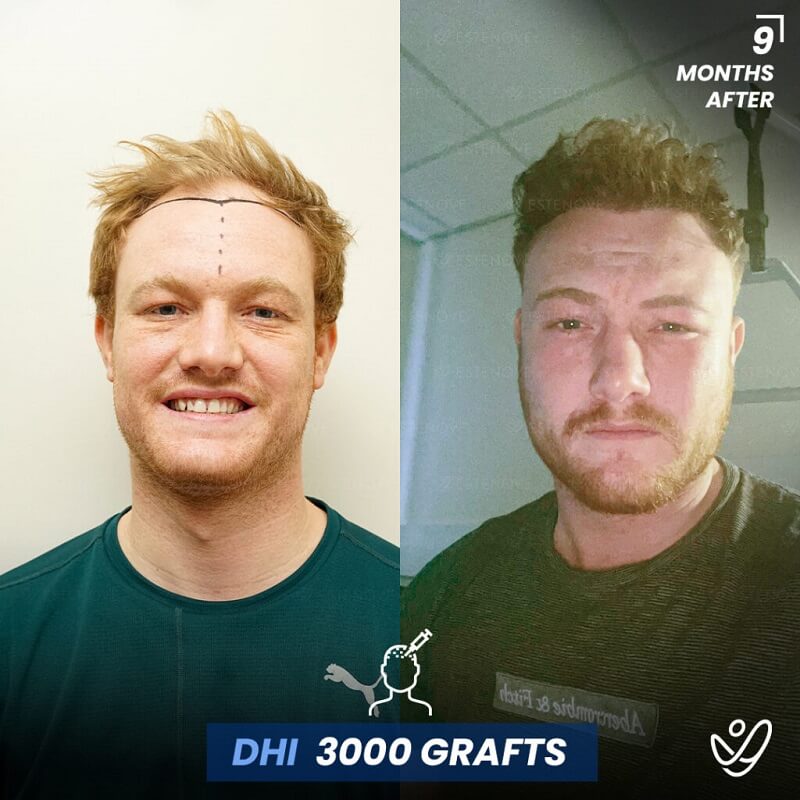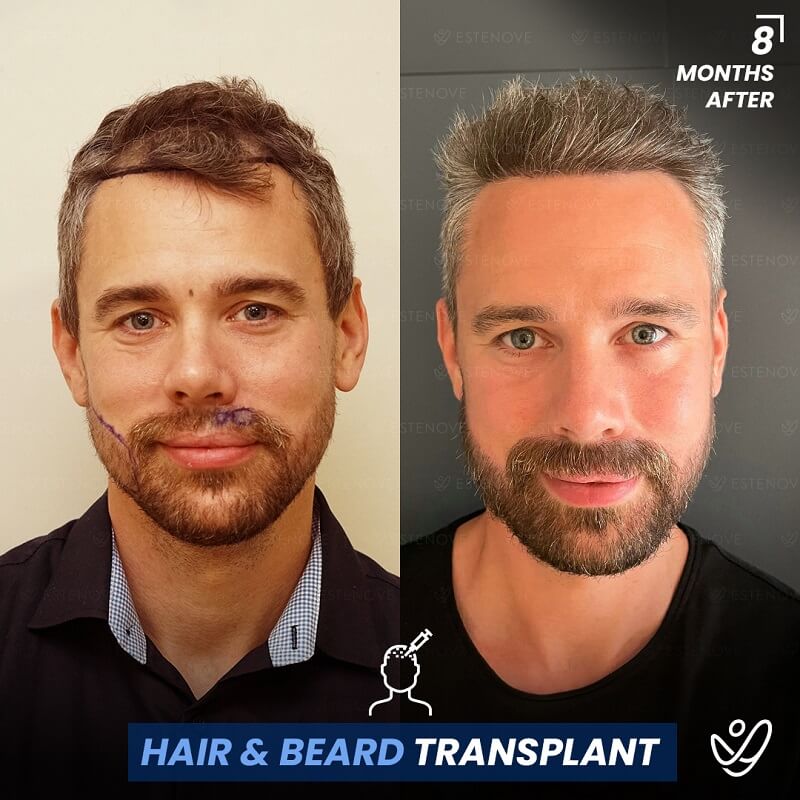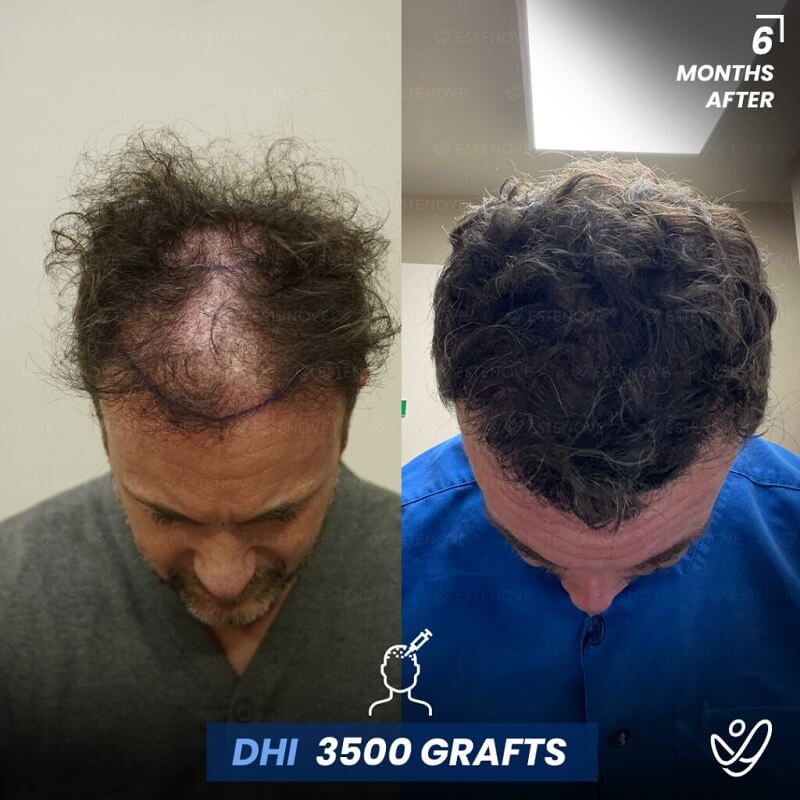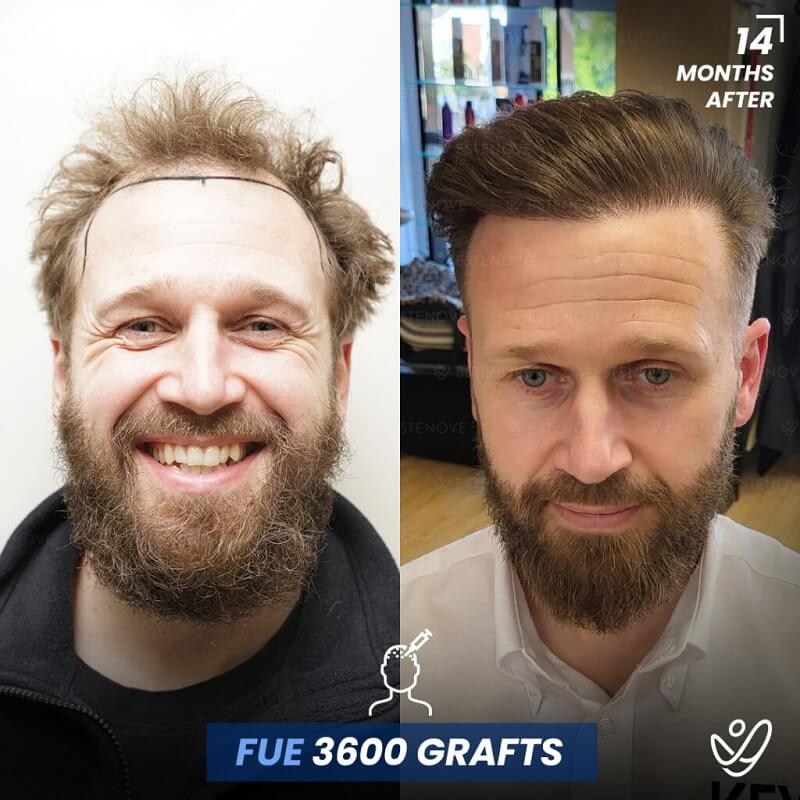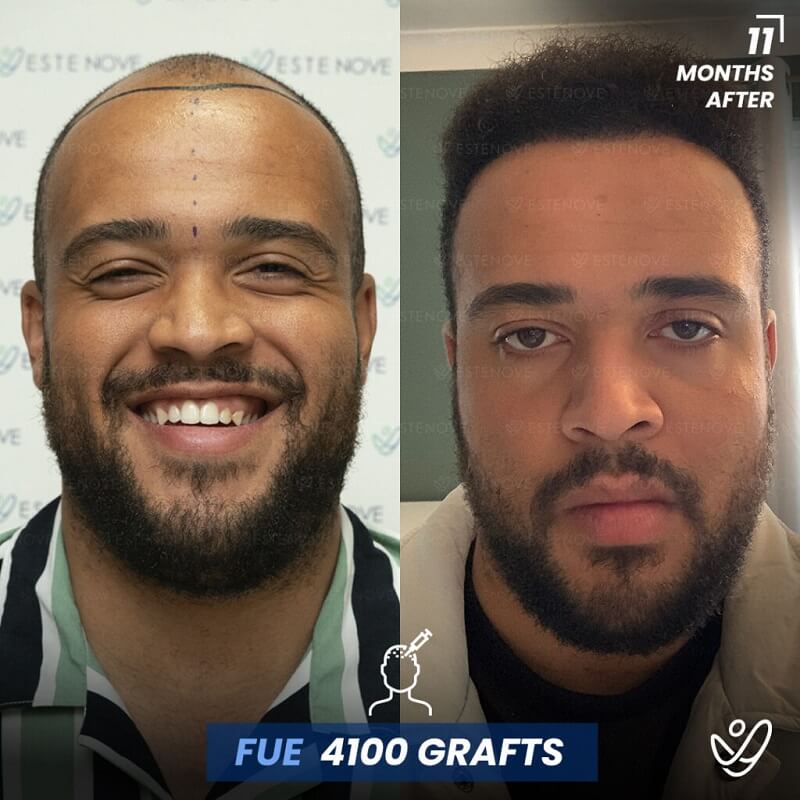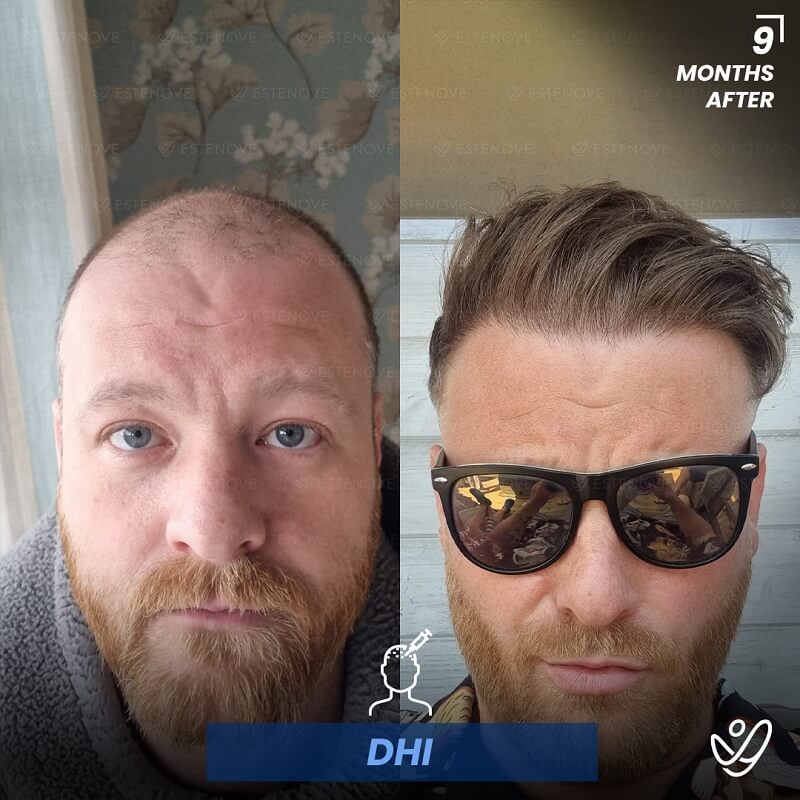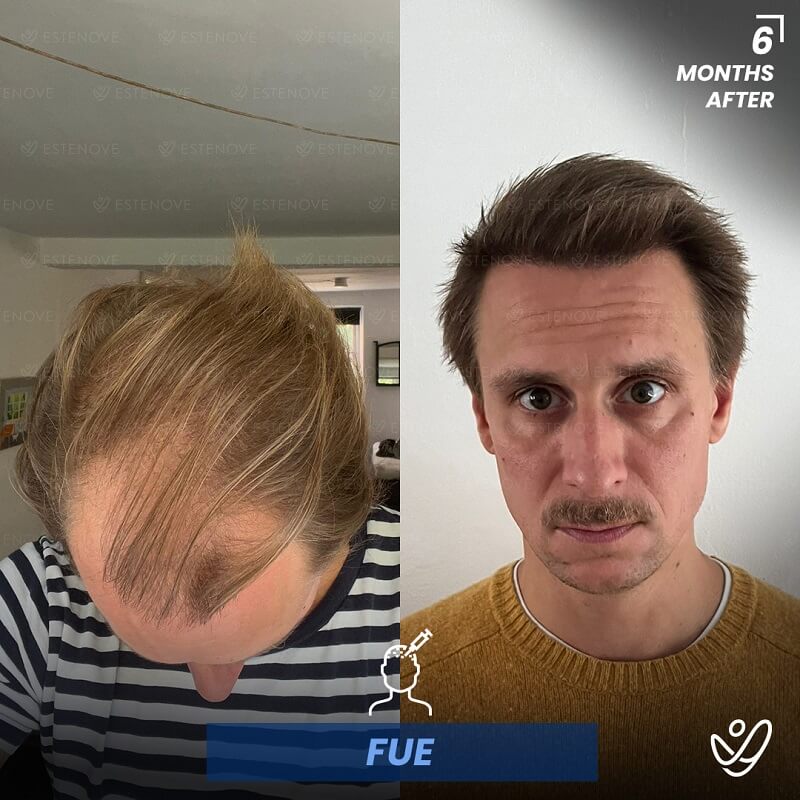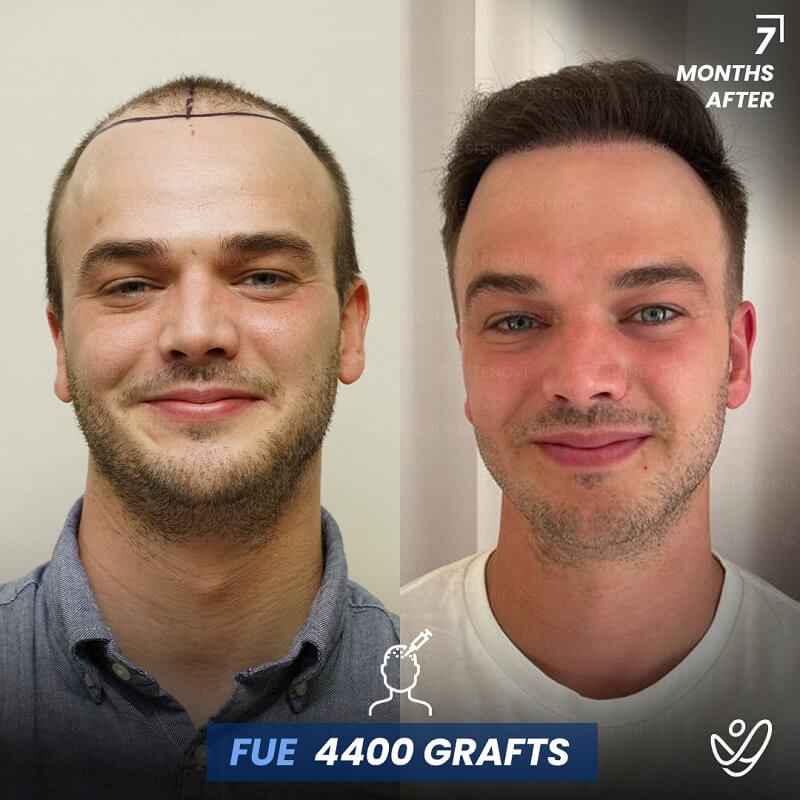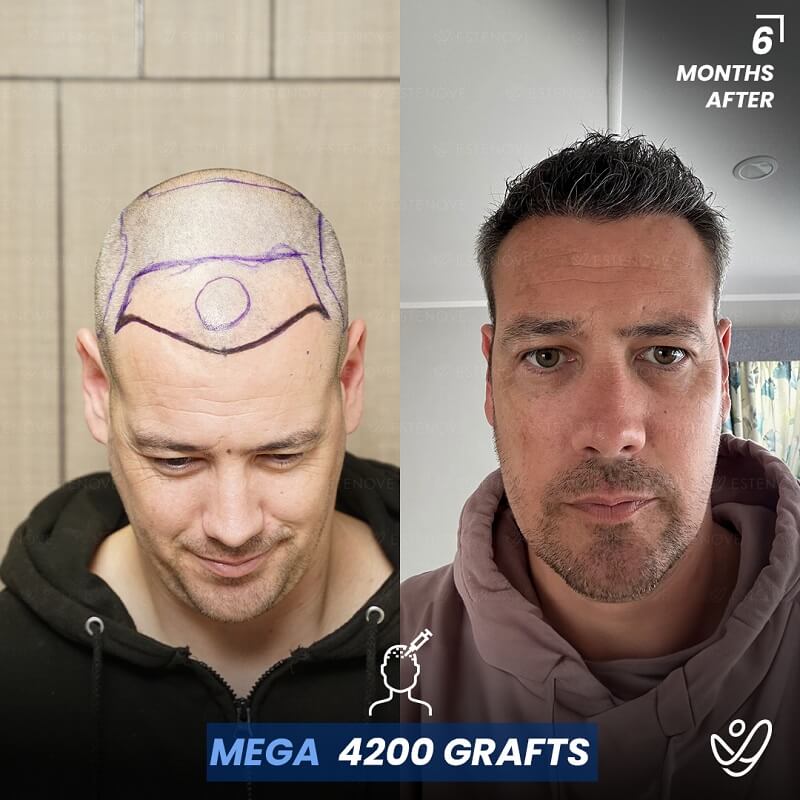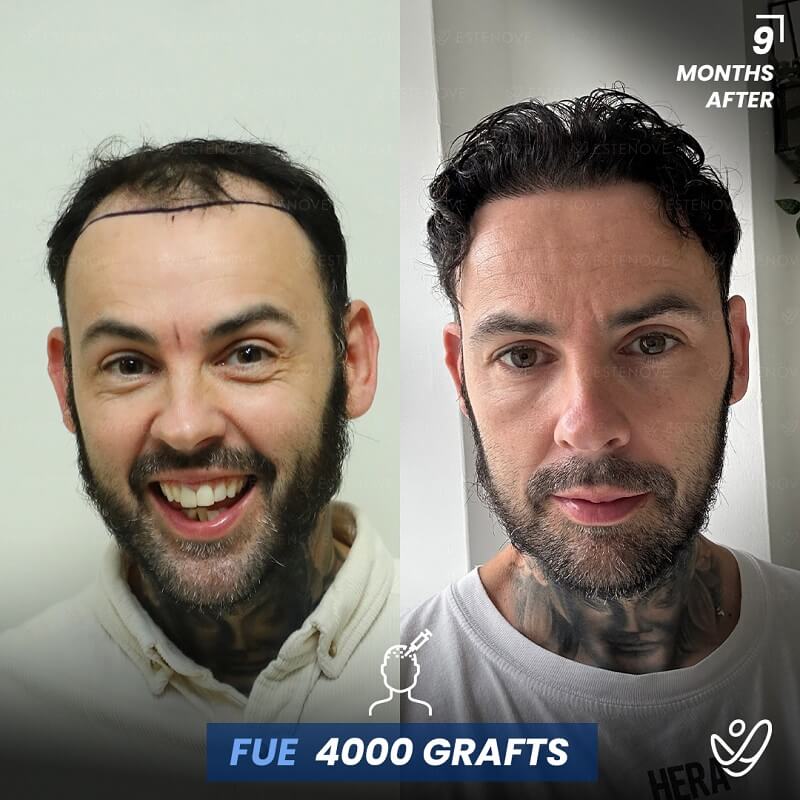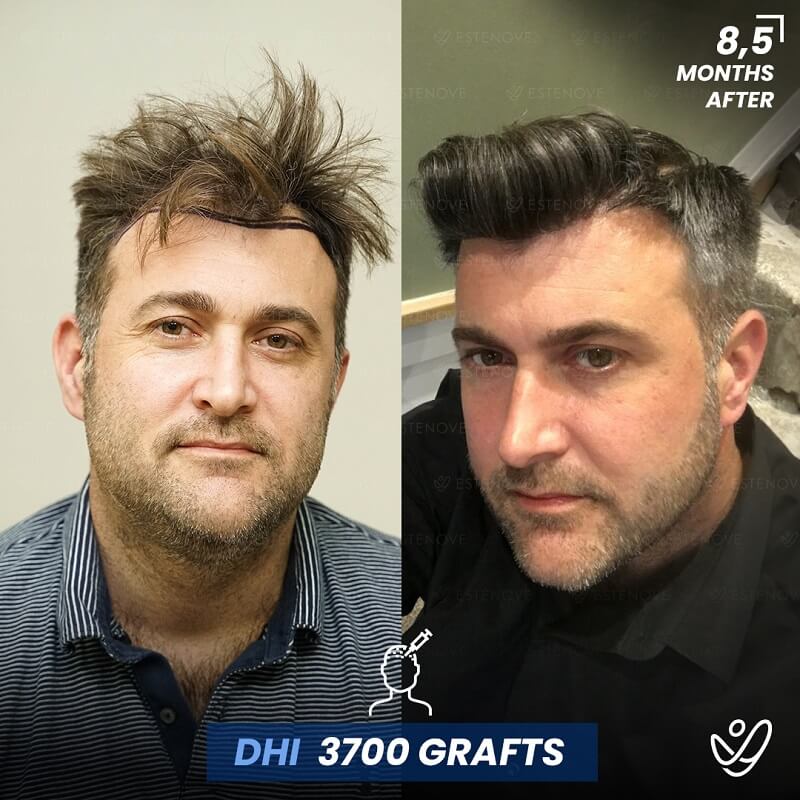Our team of experienced consultants are here to help you, fill in your details and we can start talking about your treatments.
BOOK FREE CONSULTATION
DHI Hair Transplant (Direct Hair Implantation) Technique
Hair transplants are becoming increasingly popular as it provides a solution for people suffering from hair loss. DHI hair transplants have gained significant attention due to its advantages over other hair transplant techniques.
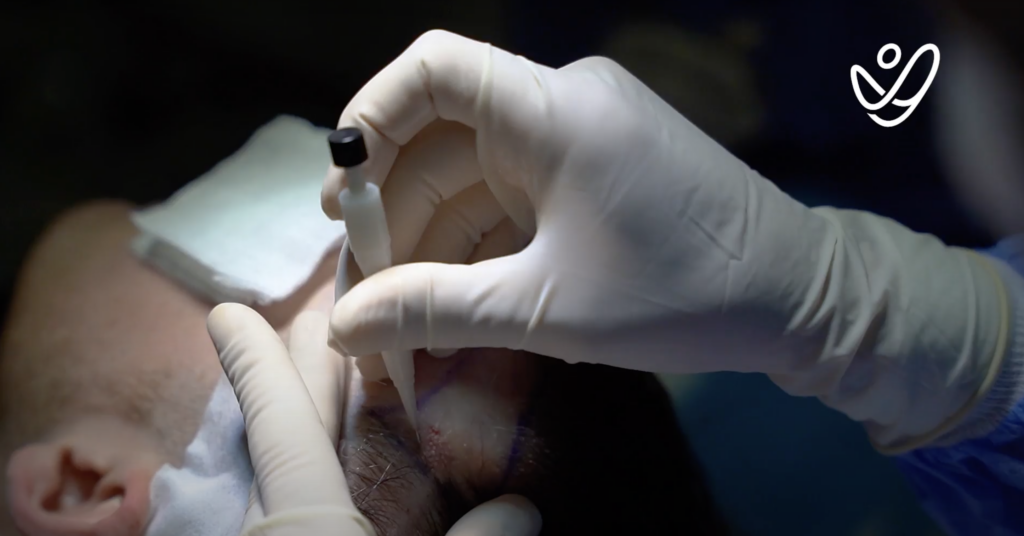 What is a DHI Hair Transplant?
What is a DHI Hair Transplant?
DHI hair transplant, also known as Direct Hair Implantation, is a hair restoration technique that involves extracting hair follicles from the donor area and implanting them into the recipient area without the need for incisions or stitches. This procedure is performed by using a specialized tool called a Choi pen, which allows for precise control over the depth, angle, and direction of the implanted hair.
DHI hair transplant is becoming increasingly popular in Turkey, particularly in Istanbul, which is known as a hub for medical tourism. Many clinics in Istanbul offer DHI hair transplant services, including those that specialize in the sapphire DHI technique. Sapphire DHI is a variation of DHI that utilizes a sapphire blade instead of a metal one for creating the implantation channels.
Before undergoing a DHI hair transplant in Turkey, patients typically undergo a consultation with a hair transplant specialist who will assess their hair loss pattern and determine the number of hair follicles needed for the transplant. The specialist will also explain the DHI hair transplant procedure and provide the patient with before-and-after photos to help them understand the expected results.
After the procedure, patients can expect to see results within 3-6 months, with full growth typically achieved within 12-18 months. DHI hair transplant is a minimally invasive procedure with minimal downtime, and patients can resume their daily activities within a few days of the procedure. However, it is essential to follow the post-operative instructions provided by the clinic to ensure optimal results.
What is a CHOI pen implanter?
The Choi implanter is a small device that is used to implant hair follicles into the recipient area of the scalp during a hair transplant procedure. It allows the surgeon to make tiny incisions in the scalp, and then insert hair follicles into those incisions in a precise and controlled manner.
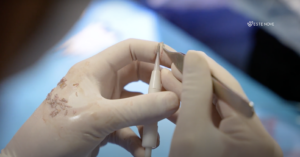 The Choi implanter is a popular choice among hair transplant surgeons because it allows for faster implantation of hair follicles, and reduces the risk of damage to the follicles during the transplantation process. It is also thought to result in a more natural-looking hairline, as the device allows for greater control over the direction and angle of the implanted hairs.
The Choi implanter is a popular choice among hair transplant surgeons because it allows for faster implantation of hair follicles, and reduces the risk of damage to the follicles during the transplantation process. It is also thought to result in a more natural-looking hairline, as the device allows for greater control over the direction and angle of the implanted hairs.
Stages of DHI Hair Transplantation
DHI Hair transplantation steps are very similar to FUE hair transplantation except for the site creation and graft implantation is performed simultaneously. DHI Hair Transplantation steps can be summed up as follows:
1. Consultation and Preparation:
The surgeon discusses your requirements and finalizes the number of grafts and hairstyle. The hairline is marked, and necessary blood tests are taken
2. Local Anesthesia:
The donor area is disinfected, and local anesthesia is used to numb the scalp. A pressure device may be used to minimize discomfort.
3. Extraction of Hair follicles:
Hair follicles are extracted from the donor area using an semi-automated extraction tool.
4. Organizing hair follicles by size:
The hairs are placed and planted to the receiving site by the use of a Choi Implanter Pen. This pen can both open the canal and transplants the hair.
5. Implantation with CHOI pens:
The extracted hair follicles are transplanted into the recipient area using Choi pen implantation tools. This technique provides more density and ensures a natural appearance.
6. Post-Operative Procedures
PRP (Platelet Rich Plasma) procedure (which strengthens the hair follicles) and the wound dressings are applied.
Differences Between DHI and Sapphire FUE Techniques
The choose of hair transplantation technique depends on many factors such as the number of grafts needed, cost, recovery time, etc. Therefore, when comparing DHI vs Sapphire FUE, telling one method is superior to others will not be completely true. Moreover, many centers using the FUE technique, use different devices which effects the result. The most advanced type of FUE is sapphire blade FUE which uses sapphire blades to open canals.
These blades cause less scarring and a more natural look than steel blades using FUE methods. In DHI method instead of blades, CHOI implementer pen is used.The main difference between the two methods is; during the hair transplantation operation canal opening is not a separate stage in DHI and it is performed right after the extraction phase. However, if a person needs more than 4000 grafts of transplantation, the DHI method cannot be used in one operation. The main advantage of DHI is it has a faster recovery period and no scarring. In the Sapphire FUE method, if the donor area is suitable, the maximum number of grafts can be implemented.
Unlike other hair transplantation methods, the recovery time with DHI hair transplant is quick, and patients can start their routine life. In the initial two weeks, hair on the planted roots begins to fall, and after three months, newly transplanted hair starts to grow and shows excellent results. But, the results start showing only after six months. To get a deeper understanding, you can check out some of the DHI hair transplants before and after look.
Why Choose EsteNove for a DHI hair transplant?
EsteNove is a leading provider of hair transplant services, specializing in the DHI hair transplant method. Our clinic has a team of experienced hair transplant specialists who use state-of-the-art technology and facilities to ensure the best possible results. EsteNove offers affordable pricing and excellent customer service, including VIP vehicle transfer, hotel accommodation, aftercare Kit, 1 year aftercare assistance, and a satisfaction guarantee.
FAQ About DHI Hair Transplant in Turkey
Is DHI Hair Transplant Painful?
For hair transplant surgery, local anesthesia is used so that the patients do not feel any discomfort. Also, EsteNove uses the needle-free injection called Comfort-in™, which makes the operation painless.
Is hair transplant safe in Turkey?
Yes, if it’s chosen correctly. Most of the hair transplant clinics in Turkey use advanced technologies, knowledge and experienced surgeons. Besides, these clinics use a solution-oriented approach that provides excellent results. Overall, there are 44 JCL-certified hospitals in Turkey which provide premium post-operation consultation and follow-ups.
How much does it take to pay for a DHI hair transplant?
DHI hair transplant cost depends on the number of grafts to cover the hairless areas, hair loss, texture, and characteristics of the donor’s hair. To know the actual cost, we encourage you to visit our guide on hair transplant cost in Turkey and take the consultation.
Are there any side effects?
The DHI hair transplant method is minimally invasive and therefore has few side effects. Once you leave the clinic, it’s normal to feel some discomfort in the scalp, but it can be taken care of with medications. Sometimes, facial swelling can occur if you sleep on the side after the procedure. In such cases, our staff will carefully guide you through the post-op procedures to ensure the optimal health of transplanted hairs.
How many follow-ups will you need?
At EsteNove, we give follow-up consultations the highest priority. So, we suggest a review at three, six, nine and twelve months to ensure proper growth of transplanted hair.
Can women undergo a DHI hair transplant?
Yes, women can undergo a DHI hair transplant. This is because female pattern baldness is widespread, which can be treated with this procedure. Also, extraction can be done from a narrow area that can be hidden by existing hair.
I have already done a hair transplant before? Can I go for a DHI hair transplant?
Yes, we can use a DHI-specialised microcamera to calculate the hairs available for proper extraction. It’s also important to understand whether it would be enough for implantation. Moreover, younger patients can quickly adopt a second DHI procedure with good donor follicles for extraction.

